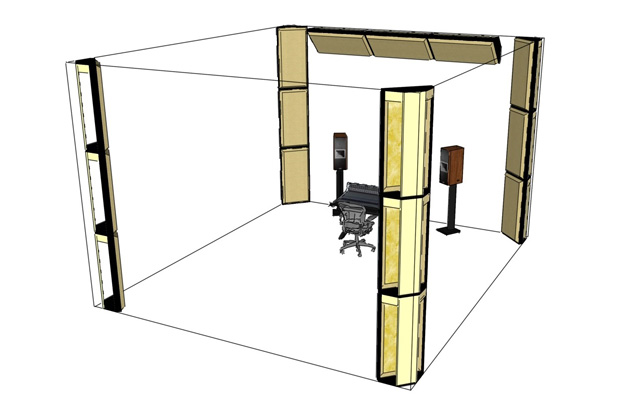I think Rajesh is not mentioning about DRC, as he is not DRC believer. He is talking about the waterfall graph that REW produces and treating the room accordingly.
Hi Koushik
Been busy few days so couldnt reply to your post.
My post is only related to HT,not stereo Listening....
Yes if i use REW if need arises it will be Only to know about the current frequency response in your room and apply corrections needed so that you can correct it by adding acoustic treatments..
More observations towards drawbacks of REW/DRC (with digital EQ) and advantages of room acoustics.
1. As i already mentioned earlier,Room treatment will solve the room modes for all the seats whereas EQ will solve it for a position provided you take measurement at many locations,though its an uphill task and also to adjust the EQ filter settings for different locations is very difficult.
2. whatever peaks/dips corrected by EQ, it will be added at some other location. There are also limitations how much boosting can be done by EQ. Many eq programs will limit to 6~8 db max as it can cause amp clipping. Room treatment does not limit yourself in this regard, however it can limit how much treatments can be added.
3. Digital correction can only solve/address to the frequency problems in the room but cannot solve "time domain issues", i.e issues with when different parts of the sound reach the ear, and these cannot be fixed except through acoustic treatment...
So i feel is to use DRC only for analysing things and acoustics for correcting them...
If you properly set and do your room acoustics correctly then that can be a permanent solution to feel/hear/listen or can even see the sound as intended in its true form.
Home Theatre is nothing but having a movie theatre at your home to view and listen to sound the same way as we do it in real theatre..
I firmly believe that movie Theatres only do there acoustics correction with wall treatments,never in digital way...so this will be the base for projecting any movies..
Same way HT should be designed and built so that there is no need to frequently tweak/adjust/tune your digital EQfilters to either cut or boost the frequencies according to your room modes for each and every movie...
more so it will be like a situation where your mind will always be focused towards corrections rather then to get immersed in the movie...
sorry for being very elaborative since i wanted to share my knowledge and experience with everyone to let them know the advantages and drawbacks between ARC VS DRC...
i can conclude this by saying ARC - permanent solution, DRC- never ending solutiion..
Few HIFI LINKS for the same issues..
http://www.hifivision.com/av-enhancers-room-acoustics/41862-acoustic-treatment-vs-digital-room-correction-equalizers.html
http://www.hifivision.com/speakers/60428-considering-room-anomalies-speaker-design.html
thanks
R.S




